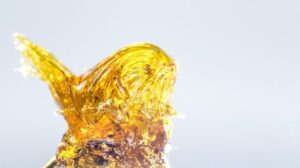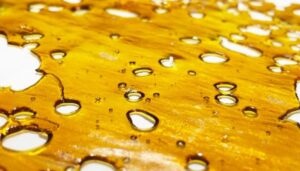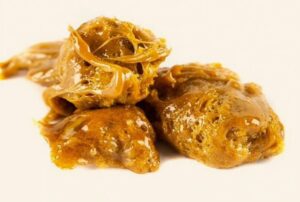Cannabis extracts are becoming increasingly popular in the cannabis industry. Convenience, medical benefits, and a lack of smoke have made extracts more appealing than traditional flowers to customers. In our shop, you may purchase this product. While the active component is comparable (because it remains unchanged), extracts provide a unique spin on cannabis usage.
We’ll look at all of the many types of extracts, from oil and shatter, in this essay. But first, let’s learn a little more about what cannabis extracts are and how they’re manufactured. Looking to try something new? Check out this.
What Are Cannabis Extracts?
Cannabis extracts are a kind of medicine that includes cannabis plant extracts, such as marijuana and hemp. THC and CBD are two well-known cannabinoids found in these mixtures. Hemp extracts will have a greater concentration of CBD, whereas cannabis ones will have more THC.
Cannabis extracts are made by soaking finely crushed cannabis material in a solvent. Extracts produced from fresh flowers are sometimes known as live resin.
The most frequent solvents are CO2 and other solvent alternatives such as butane, hexane, and others that if not properly vented can be hazardous. These solvents function by pulling THC away from the plant and concentrating it. It’s not a major issue since it’s a lengthy procedure.
What is Shatter?
Shatter is a concentrated form of cannabis. This concentrate, commonly known as butane hash oil (BHO), is referred to by a variety of street names including honey oil, wax, sap, and budder. The word “shatter” refers to the concentrate’s consistence and appearance. Shatter has an amber color and a glass-like clarity about it when broken down.
Shatter, when taken as a concentrate, is popular with marijuana users seeking for a more potent form of the drug. Shatter is quite powerful, with concentrations ranging from 60% to 80 percent THC. Certain extremely potent types of shatter have been known to contain up to 90 percent or even 99 percent CBD. The majority of cannabis sold today is burned and used in a non-concentrate form, resulting in a higher THC concentration. Despite users’ demands for a quicker and more powerful high, typical everyday marijuana has an average THC level of around 20% or less. Anything over 20 percent is considered rare.
Although marijuana in its natural form contains up to 20% THC, novice users should beware that it is rather powerful. Those who are more knowledgeable with cannabis may desire something stronger from their marijuana fix. Adventurers and individuals looking for a new sensation might use shatter as a method of pushing themselves to their limits and feeling an unique experience.
The manufacturing process for shatter is one of the more unique and distinct aspects of the substance. To produce cannabinoids and terpenes from a cannabis plant, BHO must be created using butane, a highly inflammable and easily liquefiable gas that is also quite psychoactive. Extraction is used to create the concentrated solution present in BHO. These components are naturally produced by cannabis plants. When certain receptors in the brain are activated, people feel relaxed, calm, and euphoric while also relieving pain.
Unfortunately, butane is a highly combustible product, thus amateur home laboratories that produce shatter have resulted in explosions, fires, numerous injuries, and even deaths.
In general, the manufacturing of home shatter is prohibited, regardless of whether or not medical marijuana usage is permitted. Furthermore, there are concerns regarding the possibility of contaminated batches of shatter being produced throughout the manufacturing process.
The process of extracting cannabis extracts with heat, which is then cooled, separates the butane gas. If the combination isn’t warmed long enough or at a high enough temperature, however, additional butane gas may remain in it. While breathing in butane gas while smoking shatter, users run the risk of death from asphyxiation.
Concentrates produced and sold by reputable businesses are often considered to be safer for the user than homemade laboratory manufacturing facilities. As a result, shatter is frequently seen as more dangerous to people in general than its plant-based counterpart. Manufacturers who are respectable are legally obligated to ensure that the amounts of butane in a marijuana concentrate comply with government standards.
Side Effects Of Shatter
When shatter is smoked, it produces a rapid high in the user, but the effects of the high aren’t always pleasant. Some users may become intoxicated as a result of using the concentrate, while others can experience bouts of severe anxiety or paranoia. Of course, there are numerous additional side effects connected to shatter use.
Some side effects of shatter use can include
- Increased heart rate and blood pressure
- Heightened anxiety
- Trouble concentrating
- Trouble remembering
- Weaker immune system
- Increased risk of infection (i.e. bronchitis, asthma, sinusitis)
- Irritation of airways
- Persistent sore throat
- Bloodshot eyes
- Increasing tolerance (leads to using larger amounts to achieve the same effect)
- Difficulty sleeping or lower quality of sleep
- Lack of coordination
Why Is Shatter Called Shatter?
“Shatter” is used to describe the texture and appearance of the extract concentrate. Shatter is a yellowish substance with a silvery sheen that appears to shatter when fractured and utilized. As a result, it was named because it has the characteristics of glass shattering when shattered.
What Is Shatter High Like?
Shatter is recognized and well-known for its ability to supply a fast and powerful high. To put it another way, it’s a method for getting higher faster. It’s possible to take too much of anything, especially if you’re not used to shatter’s power. Shatter has a unique flavor profile that includes terpenes rather than cannabinoids; many users claim that the extract (and dabbing) creates a more refined concentrate end result.
How Is Shatter Made?
Trichomes are extracted from cannabis to produce concentrates. Cannabis is macerated in a volumetric flask with a liquid hydrocarbon. The trichomes are blown away by an explosion (the result of the combination). To minimize the amount of butane released, the mixture is slowly heated and stirred. Because butane is poisonous to one’s lungs, smoking it can be fatal. As a consequence, BHO’s typical translucent sheet forms at the bottom of the product as a result of this process.
Let’s see how to tell the difference between great and terrible shatter. There are many various options, some of which are more obvious than others. If you want a more refined response, we recommend utilizing two or more of these methods.
The color black is commonly associated with low quality. The majority of excellent shatter is translucent in quality, although dark shatter may be either oil or shard-containing. Clear shatter, on the other hand, because it undoubtedly has higher quality, should always be kept simple and choose transparent.
Is there a lot of taste to your shatter? If that’s the case, you’ve got a terrific one! A strong odor indicates high-quality shatter, as opposed to a barely perceptible fragrance. In fact, if you smoke often, you should be able to tell how good the product is. This is why my third suggestion comes next.
It’s simple: the more you smoke, the better you’ll be able to tell high-quality shatter from low-quality. Here’s a helpful hint: If you come across a sample that interests you, don’t finish it all at once. Keep some of it as a reference point so you can pick another strain. This method allows you to learn what shatter smells and tastes like while also aiding in your own development of taste by leaving part of it as a reference.



